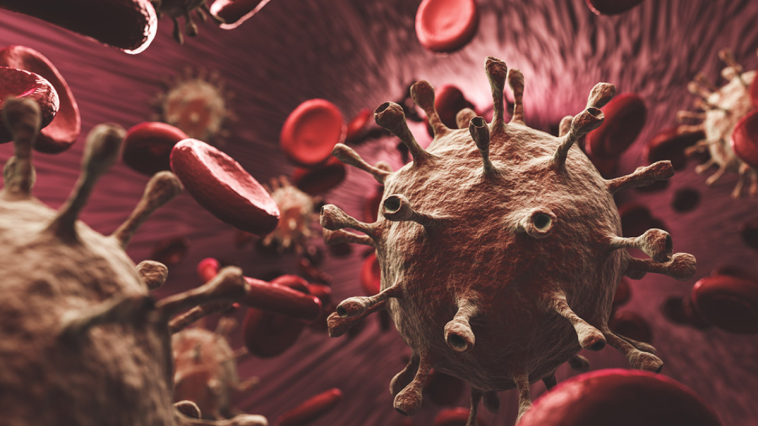First responders and caregivers play a critical role in emergencies and patient care, often stepping into unpredictable situations involving blood, bodily fluids, and potential exposure to infectious diseases.
Among the most serious threats they face are bloodborne pathogens, particularly those that are also sexually transmitted diseases (STDs), such as HIV, Hepatitis B (HBV), and Hepatitis C (HCV). Understanding how to recognize, prevent, and respond to these risks is essential for both personal safety and quality patient care.
This article provides a comprehensive overview of what every first responder and caregiver needs to know about bloodborne pathogens and their connection to sexually transmitted diseases (STDs), including exposure risks, safety protocols, and post-exposure actions.
What Are Bloodborne Pathogens?
Bloodborne pathogens are infectious microorganisms found in human blood and other bodily fluids that can cause disease in humans. These pathogens are transmitted when blood or body fluids from an infected person enter the bloodstream of another person, typically through needlesticks, cuts, or contact with mucous membranes.
Common Bloodborne Pathogens:
- Human Immunodeficiency Virus (HIV) – the virus that causes AIDS.
- Hepatitis B Virus (HBV) – can lead to chronic liver disease and liver cancer.
- Hepatitis C Virus (HCV) – often causes chronic liver infection and cirrhosis.
Notably, HIV, HBV, and HCV are also categorized as sexually transmitted infections (STIs or STDs) because they can be transmitted through sexual contact.
How Bloodborne Pathogens Relate to STDs
Many bloodborne pathogens are also sexually transmitted. This overlap means that people who are exposed to blood through occupational hazards may also be at risk of acquiring infections commonly transmitted through sex. For example:
- HIV can be transmitted through both sexual activity and exposure to infected blood.
- HBV is highly infectious and can survive outside the body for up to a week. It spreads through sex, contaminated needles, and blood exposure.
- HCV, though less commonly spread sexually, can still pose a risk during high-exposure or traumatic encounters.
For first responders and caregivers, accidental contact with infected blood, especially during trauma care, resuscitation, or handling of sharp instruments, can result in serious health consequences if not properly managed.
Key Risk Scenarios for First Responders and Caregivers
In the course of duty, exposure risks can occur in various high-stress or emergency settings. Below are common scenarios:
- Administering first aid to trauma victims (e.g., car accidents, assaults) with visible bleeding.
- Responding to overdoses or medical emergencies where used syringes are present.
- Cleaning wounds or changing dressings of patients with open sores or bloodborne infections.
- Handling soiled linens, contaminated waste, or sharp medical instruments.
- Performing CPR or mouth-to-mouth resuscitation without protective barriers.
These situations underscore the importance of using Universal Precautions and Personal Protective Equipment (PPE) at all times.
Universal Precautions and Standard Safety Measures
Universal Precautions is a safety approach that treats all human blood and certain bodily fluids as if they are infectious, regardless of the source. This assumption helps caregivers and first responders stay protected without needing to know a patient’s medical history.
Core Safety Measures:
- Wear gloves when handling blood or bodily fluids.
- Use face masks and eye protection during procedures that might cause splashes.
- Immediately dispose of used needles and sharp instruments in proper sharps containers.
- Wash hands thoroughly with soap and water after contact, even if gloves were worn.
- Disinfect surfaces and equipment after patient interaction using approved cleaners.
- Adhering strictly to these precautions reduces the risk of transmission significantly.
Post-Exposure Protocol: What to Do If Exposed
Despite best efforts, accidents can happen. If a caregiver or responder is exposed to potentially infectious material, it’s critical to follow post-exposure protocols immediately.
Post-Exposure Steps:
- Wash the affected area with soap and water. If eyes or mucous membranes are affected, flush with water or saline for at least 15 minutes.
- Report the incident to the supervisor or infection control officer as soon as possible.
- Seek medical evaluation immediately for post-exposure assessment.
- Consider post-exposure prophylaxis (PEP) – particularly for HIV, if started within 72 hours.
- Complete an incident report and follow up with required testing (e.g., baseline and follow-up HIV/HBV/HCV tests over 6 months).
Prompt action can significantly reduce the risk of contracting an infection and ensures proper documentation and care.
Vaccinations and Preventive Measures
The best defense against certain bloodborne pathogens is vaccination and routine screening.
Important Preventive Measures:
- Hepatitis B Vaccination – mandatory or highly recommended for healthcare and emergency personnel.
- Regular bloodborne pathogen and STD screenings for those frequently exposed.
- Training and certification in bloodborne pathogen protocols, which is often required in healthcare and emergency response roles.
- Vaccination and education provide long-term protection and peace of mind for caregivers and first responders.
Legal and Ethical Considerations
First responders and caregivers are not only responsible for protecting themselves but also for respecting the privacy and dignity of patients who may be carriers of infectious diseases.
Key Considerations:
- Maintain patient confidentiality – never disclose someone’s infection status without proper consent.
- Follow OSHA (Occupational Safety and Health Administration) regulations and workplace policies related to exposure and safety.
- Avoid discrimination or differential treatment based on perceived risk of infection.
Ethical care requires compassion, professionalism, and adherence to both medical and legal standards.
Conclusion
Understanding the intersection between bloodborne pathogens and sexually transmitted diseases is vital for every first responder and caregiver. These professionals are often the first line of defense—not just for patients but also for their own health and safety.
By staying informed, using proper precautions, and responding quickly to potential exposures, they can minimize risks and continue delivering lifesaving care with confidence.
Knowledge, vigilance, and preparation are the keys to protecting both caregiver and patient in high-risk situations. When you know the risks—and how to respond—you’re not just safer; you’re empowered.




